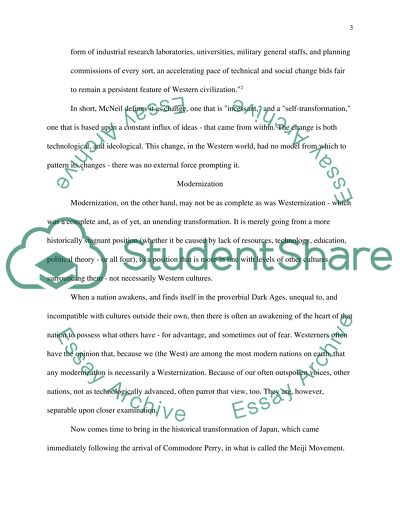Cite this document
(The Meiji Restoration Modernization or Westernization Essay, n.d.)
The Meiji Restoration Modernization or Westernization Essay. https://studentshare.org/history/1536217-were-westernization-and-modernization-of-a-piece-or-were-there-distinct-forms-of-modernity-that-incorporated-western-elements-to-different-degrees
The Meiji Restoration Modernization or Westernization Essay. https://studentshare.org/history/1536217-were-westernization-and-modernization-of-a-piece-or-were-there-distinct-forms-of-modernity-that-incorporated-western-elements-to-different-degrees
(The Meiji Restoration Modernization or Westernization Essay)
The Meiji Restoration Modernization or Westernization Essay. https://studentshare.org/history/1536217-were-westernization-and-modernization-of-a-piece-or-were-there-distinct-forms-of-modernity-that-incorporated-western-elements-to-different-degrees.
The Meiji Restoration Modernization or Westernization Essay. https://studentshare.org/history/1536217-were-westernization-and-modernization-of-a-piece-or-were-there-distinct-forms-of-modernity-that-incorporated-western-elements-to-different-degrees.
“The Meiji Restoration Modernization or Westernization Essay”. https://studentshare.org/history/1536217-were-westernization-and-modernization-of-a-piece-or-were-there-distinct-forms-of-modernity-that-incorporated-western-elements-to-different-degrees.


